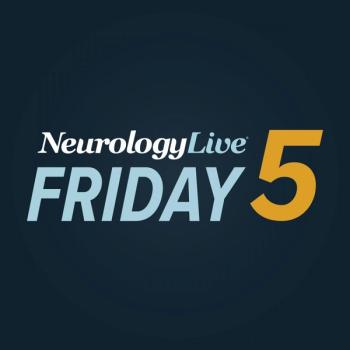
Phase 2 Published Data of Oveporexton Show Broad Improvements of Narcolepsy Type 1 Symptoms
Key Takeaways
- Oveporexton significantly improved excessive daytime sleepiness and cataplexy in narcolepsy type 1 patients across all doses compared to placebo.
- The trial showed marked improvements in sleep latency and Epworth Sleepiness Scale scores, with results reaching normative values seen in healthy individuals.
The investigational oral orexin receptor 2-selective agonist oveporexton is designed to restore orexin signaling to address the underlying orexin deficiency caused by narcolepsy type 1.
Takeda recently published data in the New England Journal of Medicine from its phase 2b trial (NCT05687903) testing the company’s investigational oral orexin receptor 2 (OX2R)-selective agonist oveporexton, formally known as TAK-861, in patients with narcolepsy type 1 (NT1). Overall, the findings showed significant improvement in excessive daytime sleepiness and cataplexy across all doses tested compared with placebo through 8 weeks of treatment.1
In the trial, investigators randomized 112 patients aged 18 to 70 years with NT1 equally to 1 of 4 dosing arms (twice-daily 0.5/0.5 mg, 2/2 mg, 2/5 mg, or once-daily 7 mg) or placebo for 8 weeks. The mean changes from baseline to week 8 in average sleep latency on Maintenance of Wakefulness Test (MWT), the primary end point, were 12.5, 23.5, 25.4, 15.0, and −1.2 minutes, respectively (adjusted P ≤.001 for all comparisons vs placebo). Notably, the mean sleep latency on the MWT reached values consistent with normative values previously observed in healthy patients.
On secondary end points, researchers reported mean 8-week changes in Epworth Sleepiness Scale total score of −8.9, −13.8, −12.8, −11.3, and −2.5, respectively (adjusted P ≤.004 for all comparisons vs. placebo). Additionally, findings showed that the weekly incidence of cataplexy at week 8 was 4.24, 3.14, 2.48, 5.89, and 8.76, respectively (adjusted P <.05 for 2 mg twice daily and 2 mg followed by 5 mg daily vs. placebo), favoring oveporexton.
“Narcolepsy type 1 is a 24-hour disease making it very challenging to function and lead a healthy, productive life,” principal investigator Yves Dauvilliers, MD, director of the Sleep-Wake Disorders Center in the Department of Neurology at Gui de Chauliac Hospital in Montpellier, France, said in a statement.1 “Oveporexton is the leading investigational orexin receptor 2 agonist designed to address the underlying pathophysiology of NT1. The supporting data from Takeda’s Phase 2b trial demonstrated clinically meaningful improvements across the full spectrum of symptoms impacting people with NT1.”
For exploratory endpoints in the trial, researchers evaluated the Narcolepsy Severity Scale for Clinical Trials (NSS-CT) and the 36-item Short Form Survey (SF-36) to assess quality of life. Authors noted that NSS-CT domain scores showed marked improvements across most areas, and all oveporexton dose groups demonstrated clinically meaningful improvements in quality of life on the SF-36 compared with placebo.
All told, the most reported treatment-emergent adverse events (TEAEs) were insomnia (in 48% of the patients; most cases resolved in 1 week), and increased urinary urgency (30%) and frequency (29%). Most TEAEs reported by participants were mild to moderate, started in 1 to 2 days of treatment, and were transient. Notably, authors observed no cases of hepatotoxicity or visual disturbances. In addition, researchers noted that the majority of participants (95%) who completed the trial enrolled in the long-term extension study, with many patients reaching 1 year or more of continued treatment.
“For people living with narcolepsy type 1, going to work or attending school and managing everyday activities like driving, exercising or socializing with family and friends can become daunting challenges,” Sarah Sheikh, MD, MSc, BM, BCh, MRCP, head of the Neuroscience Therapeutic Area Unit and Global Development at Takeda, said in a statement.1 “Our Phase 2b results suggest that restoring orexin signaling has the potential to help people with narcolepsy type 1 achieve near normal ranges of wakefulness as seen in healthy individuals while also positively impacting the broader spectrum of the disease. We are working diligently to further investigate oveporexton and its potential to become the first-in-class, transformative therapeutic option for people living with NT1.”
REFERENCES
1. The New England Journal of Medicine publishes data from phase 2b trial of oral orexin receptor 2 agonist oveporexton (TAK-861) in people with narcolepsy type 1. News release. Takeda. May 14, 2025. Accessed July 10, 2025. https://www.takeda.com/newsroom/newsreleases/2025/oveporexton-phase2b-trial-results/
2. Dauvilliers Y, Plazzi G, Mignot E, et al. Oveporexton, an oral orexin receptor 2-selective agonist, in narcolepsy Type 1. N Engl J Med. 2025;392(19):1905-1916. doi:10.1056/NEJMoa2405847
Newsletter
Keep your finger on the pulse of neurology—subscribe to NeurologyLive for expert interviews, new data, and breakthrough treatment updates.


































